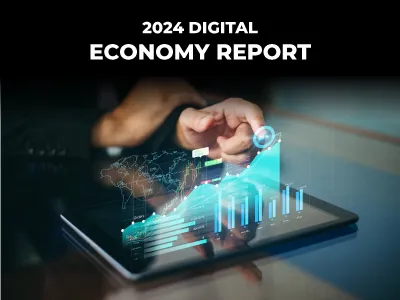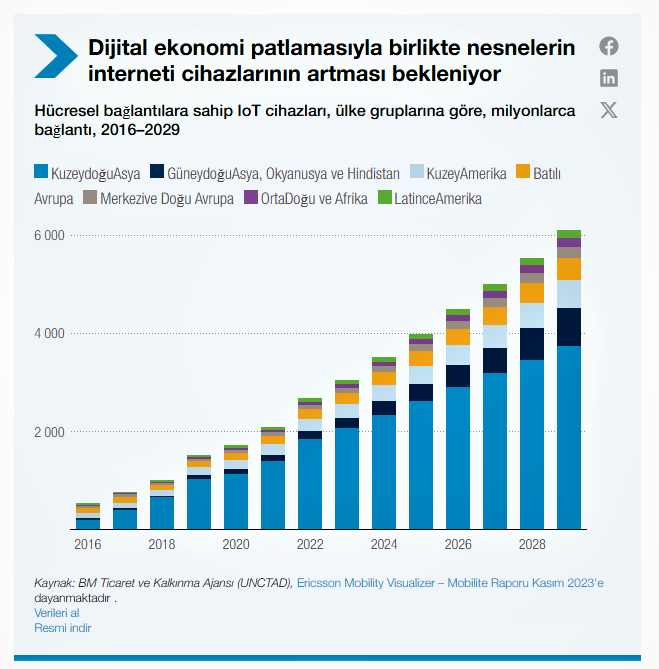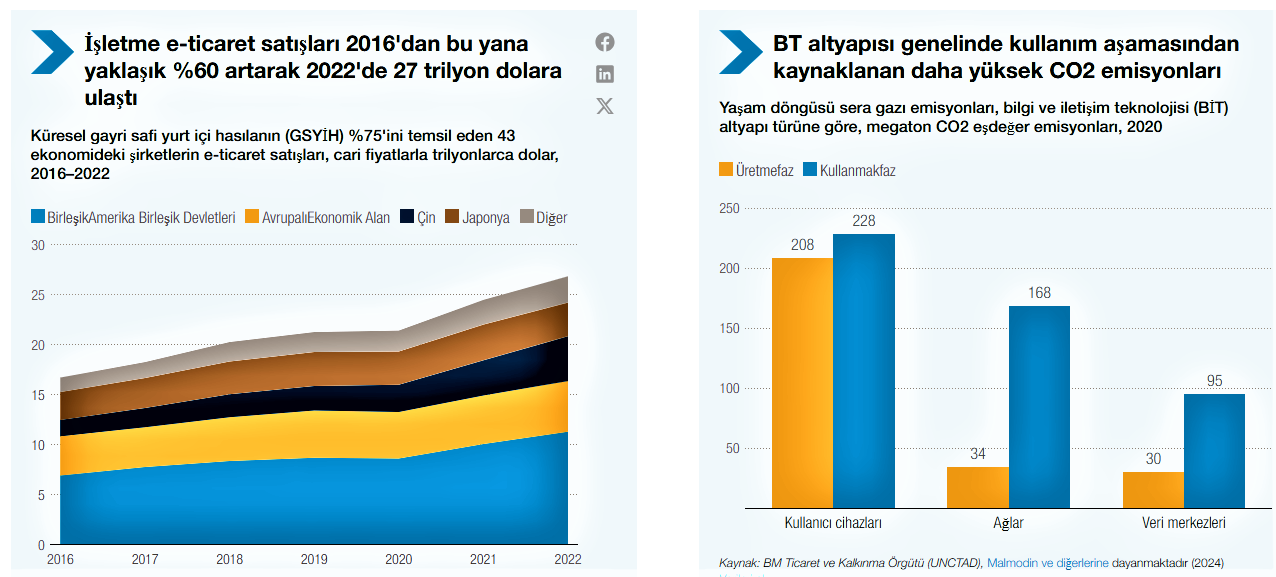
Creating an Environmentally Sustainable and Inclusive Digital Future.
In this context, the Digital Economy Report 2024 underlines the urgent need for environmentally sustainable and inclusive digitalization strategies.
Digital technology and infrastructure rely heavily on raw materials, and the production and disposal of more devices are increasingly damaging the planet, with increasing water and energy needs. For example, the production and use of digital devices, data centers, and information and communication technology (ICT) networks account for an estimated 6 percent to 12 percent of global electricity use.

Developing countries also bear the brunt of the environmental costs of digitalization but reap fewer benefits. Exporting low-value-added raw materials and importing high-value-added devices increases digital waste. This further complicates geopolitical tensions and challenges over critical minerals abundant in most developing countries.
Against this backdrop, the report calls on policymakers, industry leaders, and consumers to take bold action. It calls for a global transition towards a circular digital economy focusing on circularity through durable goods, responsible consumption, reuse and recycling, and sustainable business models and design.
WE MUST HARNESS THE POWER OF DIGITALIZATION
"We must harness the power of digitalization to advance inclusive and sustainable development, while reducing its negative environmental impacts."
UN SECRETARY GENERAL FOR TRADE AND DEVELOPMENT (UNCTAD) REBECA GRYNSPAN
Digitalization is Growing
"Environmental Footprint"
The digital economy is increasing. In this context, annual smartphone shipments have more than doubled since 2010, reaching 1.2 billion in 2023. On the other hand, Internet of Things (IoT) devices are projected to increase 2.5 times between 2023 and 2029, reaching 39 billion. Thus, new data from 43 countries, representing nearly three-quarters of global GDP, shows that commercial e-commerce sales will increase by almost 60 percent from 2016 to 2022, reaching $27 trillion.
'This Growth is Placing an Increasingly Heavy Burden on the Environment'
The digital economy is resource-intensive, with a two-kilogram computer requiring 800 kilograms of raw materials. A smartphone also requires around 70 kilograms from production to disposal.
So, while the production phase is the most efficient (smartphones account for around 80 percent of greenhouse gas (GHG) emissions), environmental damage occurs throughout the lifecycle of devices and ICT infrastructure, including e-commerce. Digital waste is growing faster than collection rates. Waste from displays and small IT equipment increased by 30 percent between 2010 and 2022, reaching 10.5 million tons. Improper disposal, therefore, leads to pollution and other health and environmental hazards.

Increasing demand for data transmission, processing, and storage for new technologies such as blockchain, artificial intelligence (AI), fifth-generation (5G) mobile networks, and IoT is also driving emissions. For example, the ICT sector emitted an estimated 0.69 to 1.6 gigatonnes of CO2 equivalent emissions in 2020, accounting for 1.5 to 3.2 percent of global greenhouse gas emissions.
Addressing these issues requires a multi-faceted approach. It involves policy reforms, stakeholder action, and most importantly, technological innovation. By making business models more circular, logistics more energy efficient, packaging more sustainable, and consumption more responsible, we can harness the power of technology to create a more sustainable digital economy.
 Back
Back







